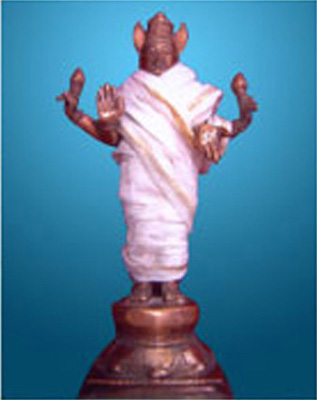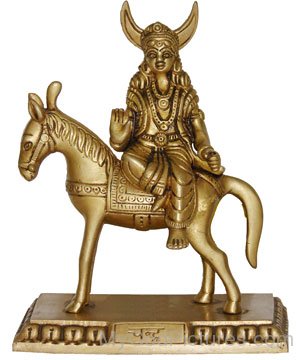Names of the Moon (quoted from Graha Sutras by Ernst Wilhelm):
“NAMES OF THE MOON
The most common name of the Moon is Chandra, “shining.” Similar names such as Chandrama, Chandrika and Chandraka also refer to the Moon as the shiny orb in the sky. Indu, meaning “bright drop,” is also very commonly used for the Moon.
The Moon’s relationship to the stars is a very important feature in Vedic philosophy and thus the Moon is known as Udupati or Udunatha, “the lord of the stars,” as well as Nakshatranatha, “the lord of the Nakshatras,” which the Moon is husband to.
In contrast to the Sun, the Moon’s light is cool and thus the Moon is known as Shitagu, Shitamshu, Shitarashmi and Himanshu all meaning, “cool rayed,” and as Shitadyuti, “cool brightness.”
The Moon is the obvious sight at night and thus the Moon is known as Rajanipati and Ratrisha, “the lord of night” as well as Ratrimani, “jewel of the night,” and Nishakara, “night maker.”
The Moon is known as Vidhu, meaning “lonely” or “solitary” which is ironic in view of the fact that the Moon shares the heavens with his twenty-seven wives, the Nakshatras. Though having many wives the Moon still roams the skies looking to quench his love- sickness and though even having had an affair with Jupiter’s wife, his loneliness remains unquenched. It is because of this that an afflicted Moon leads to love affairs.
The Moon is known as Kumudinipati, “the lord of white lotuses,” whose flowers open only at night. This appellation indicates that the Moon holds sway over all those things active during the night.
The Moon makes more erratic changes in latitude than does any other Graha and is thus know as Shashi, “containing a hare,” and as Shashanka, “hare marked,” as a hare similarly bounces along. The Moon is also know as Mriganka, “deer marked,” due to its markings which are thought to resembling the spots on a deer and also due to its gentle nature, which is symbolized by a deer.
The Moon is Samudraka, “oceanic,” due to its influence on the tides. The Moon is also simply known as Glau, “the round lump,” and this may refer to the Moon being a lump that has separated from Earth.
One last very common and very important name of the Moon is Soma, “juice,” which refers particularly to the juice of the sap in the plants and thus makes the Moon the lord of plants and vegetation. The juice is also the blood in the animals, the nectar of immortality of which the Moon is the receptacle, and all life-giving and nourishing fluids.”
Permission to quote this passage generously granted by Ernst Wilhelm.
Valli Wells is available for ½-hour and 1-hour Live Astrologer Consultations (LAC) at AstroVed (USD global version only). She encourages people to create a free account at AstroVed and run free reports about their own Birth Chart, Birth Star, Moon Sign, and Planetary Influences. This is a simple way to begin to make friends with astrology. She invites everyone interested to learn more about Vedic astrology to join a newly formed Facebook group for Astrology Club – AstroVed.
Reminder: All the planets like it when we help others in need. Please consider making a donation to Dr. Pillai’s non-profit charity Tripura Foundation.

